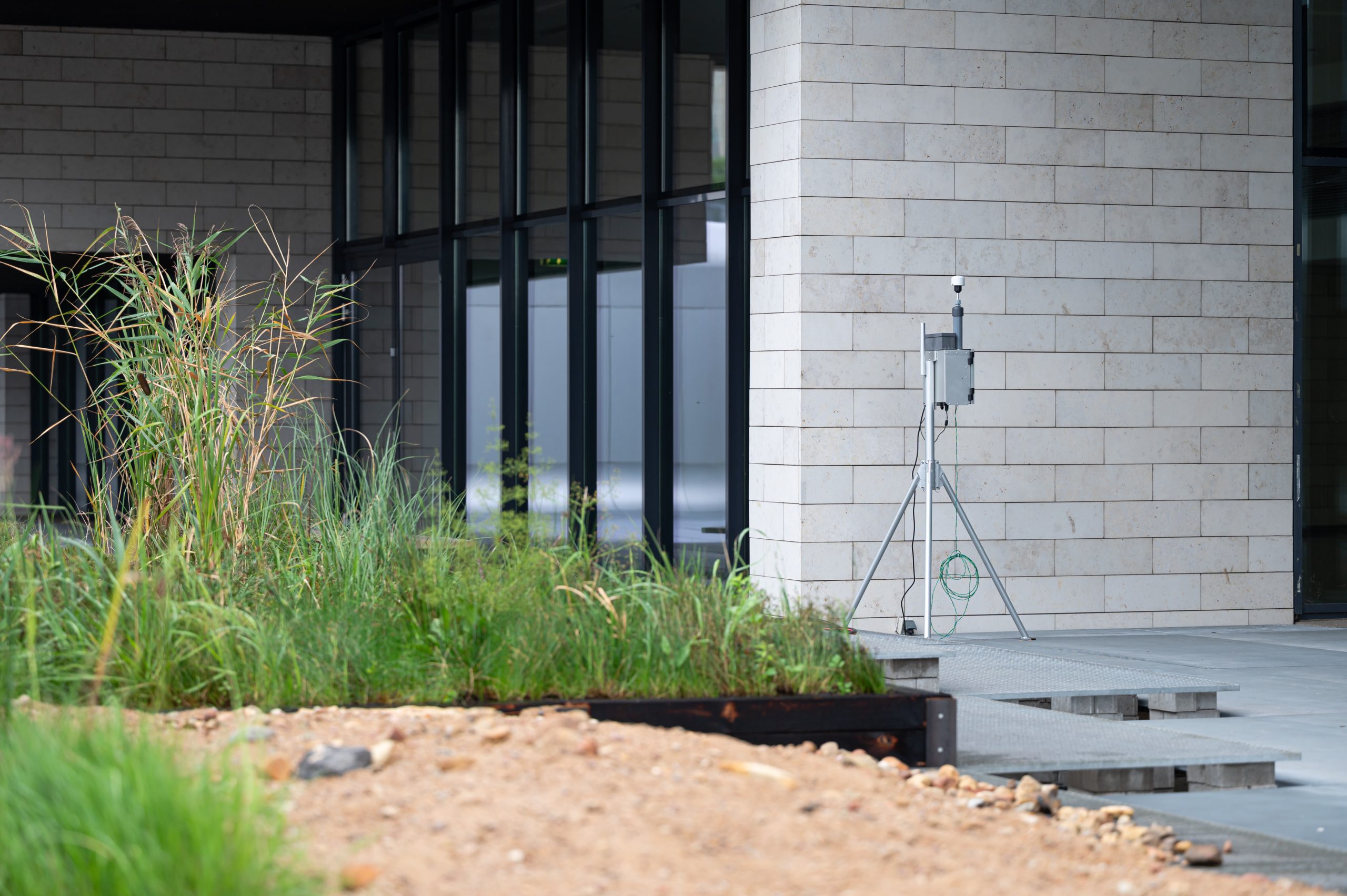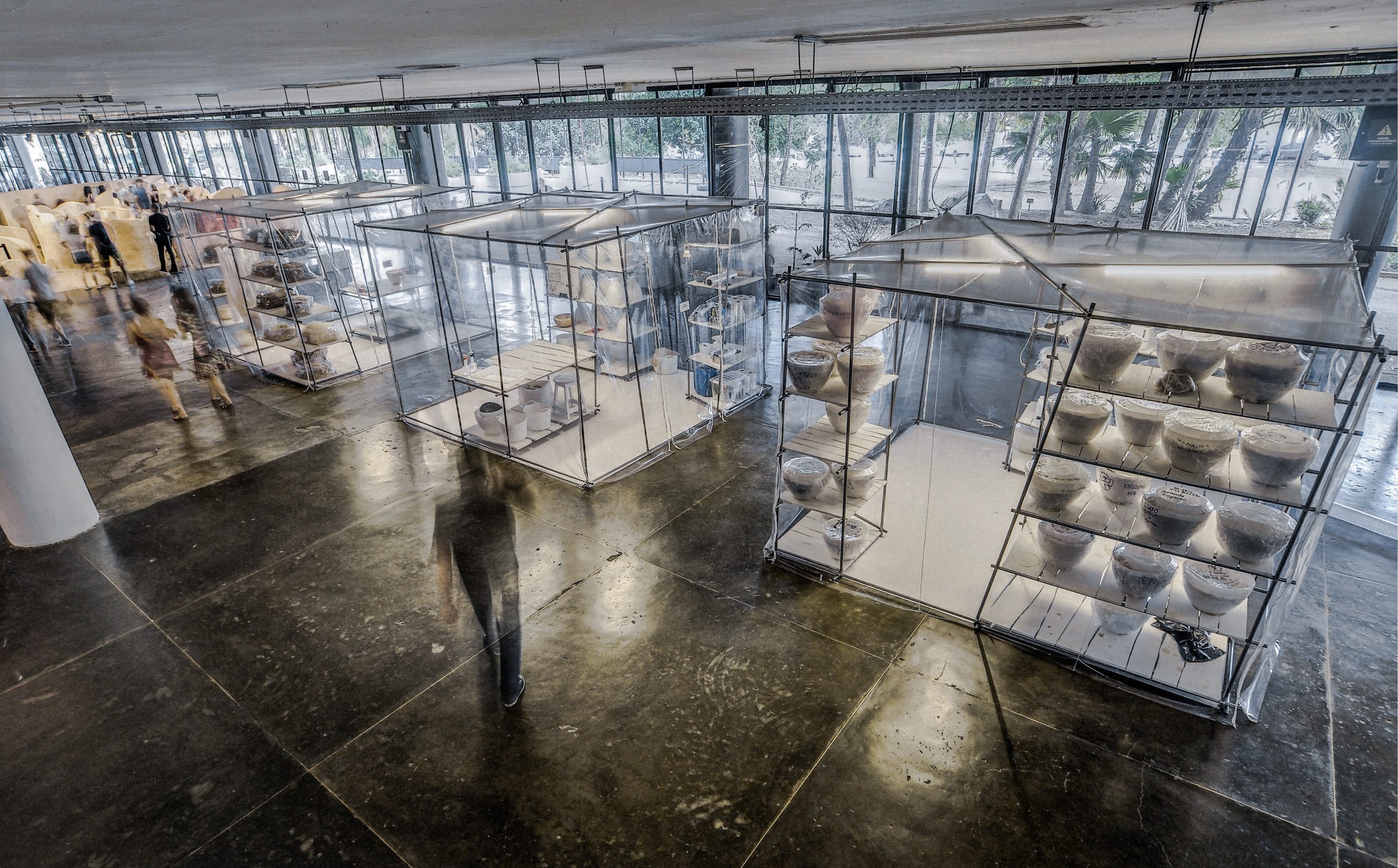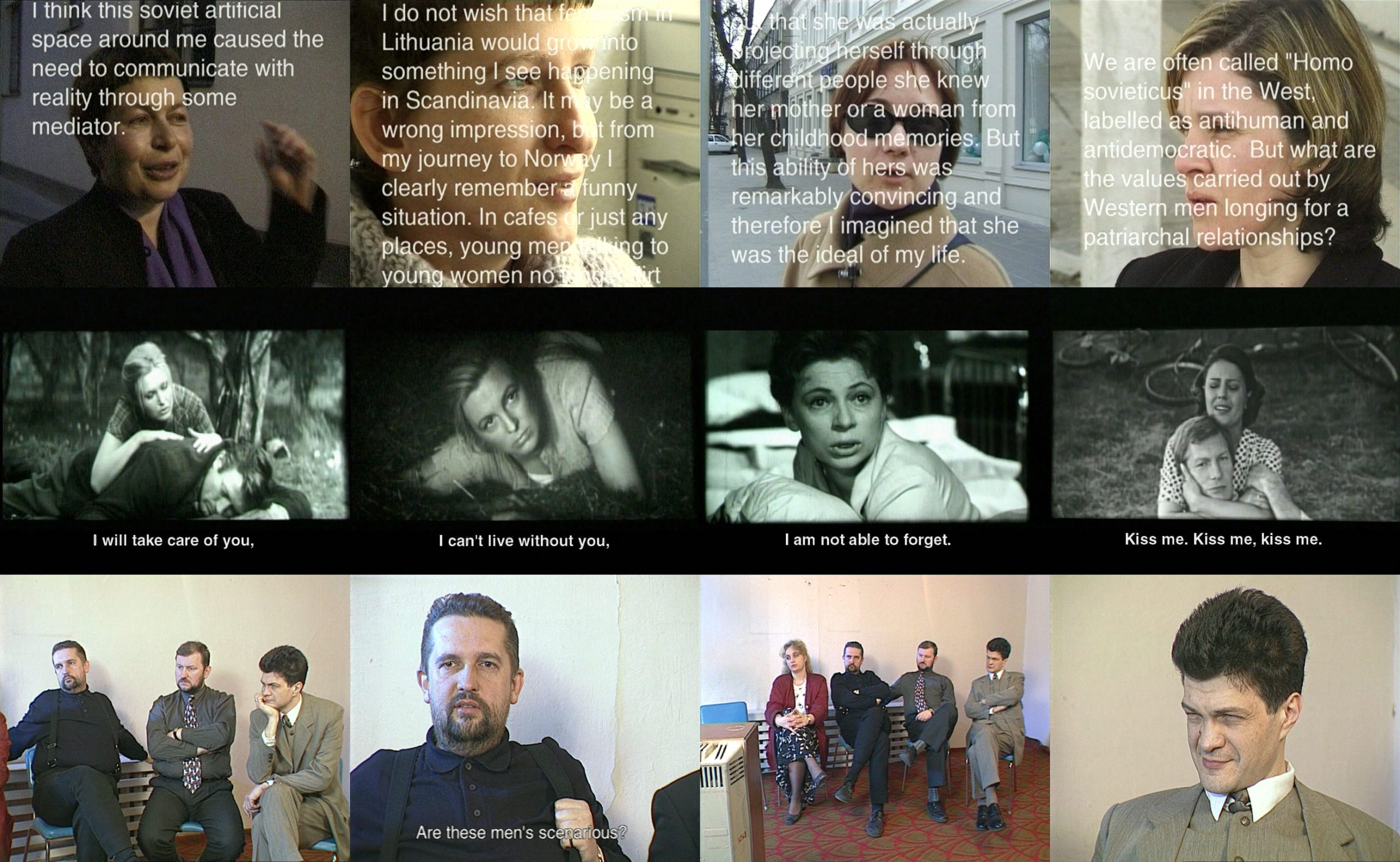Structure of Affect is an experimental playground that assumes various forms: a swamp, an artificial organ, and a laboratory of emergent ecologies.
The work consists of a mix of materialities, objects, and agencies: lower peatland and raised peat bog models, a water filtration system, an air pollution sensor, a reed papermaking workshop, doodling robots, and networks connecting them all. The plant community models were developed in collaboration with wetland restoration scientists. After the exhibition, all plants on display will be returned to their habitats, which are undergoing restoration.



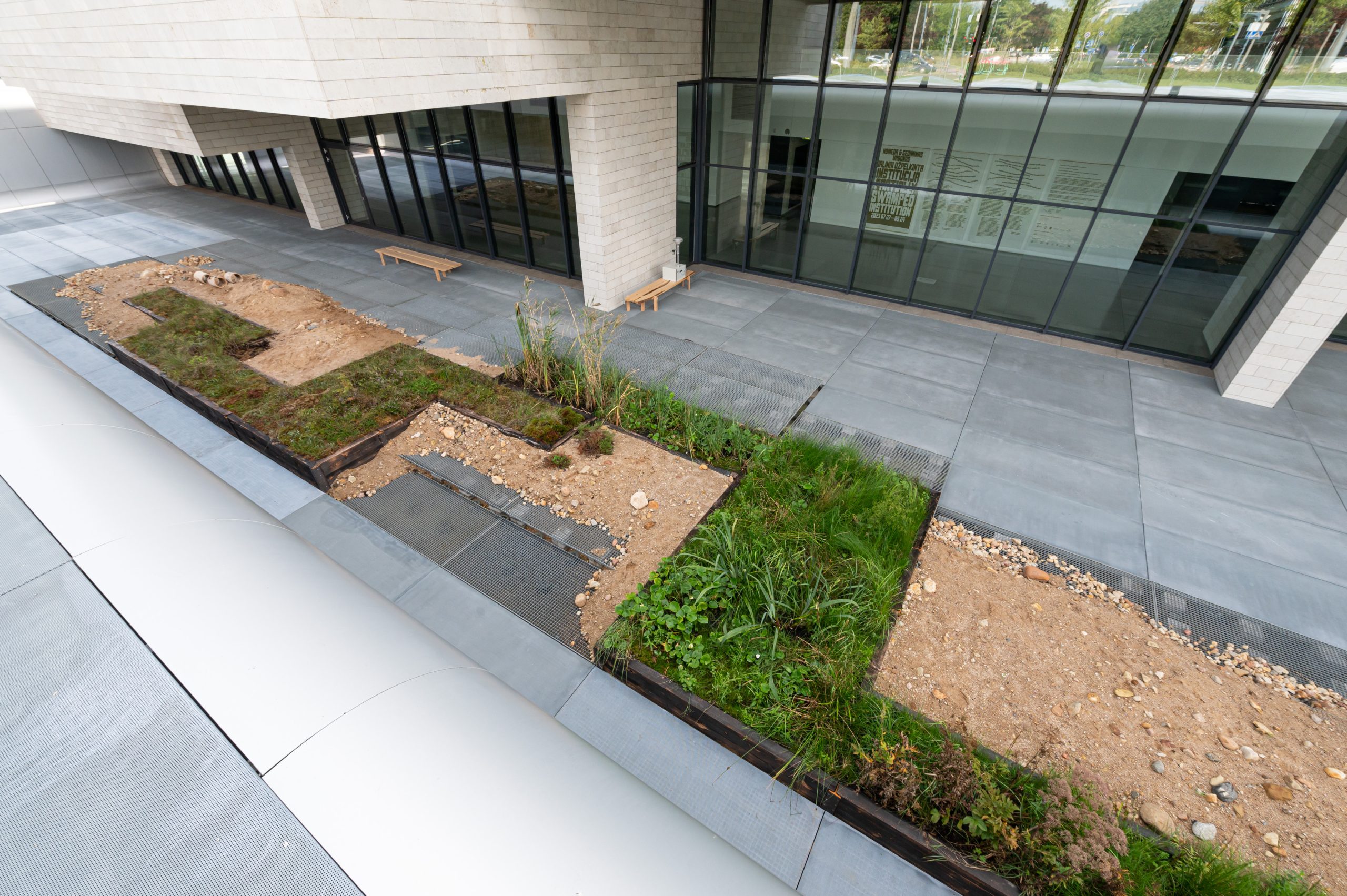
The swamp—a living organism—is nested in the center of the former museum of the revolution. Thus, the architecture that once celebrated the progress of modern man and his victory over nature is interrupted by a formless hybridity that breaks through the reinforced concrete floor in what is now a center of contemporary culture, the National Gallery of Art. Confronting a modernist legacy of filtering and purification, this animated and more-or-less invited entity introduces an active multiplicity of dirt, critters, sounds, and smells, and invites us to imagine the metabolic processes in which the institution is—and could be—involved.


In cooperation with the Environmental Protection Agency of Lithuania, a solid particle sensor is installed in the swamp of Structure of Affect. The data it gathers is transmitted to the AI module Swamp Intelligence and to two doodling robots in the exhibition hall. The robots create their own graphic swampy imaginaries by translating the data collected in the swamp into vectors (perhaps making us suspect that the swamp brain has dreamt the whole exhibition).

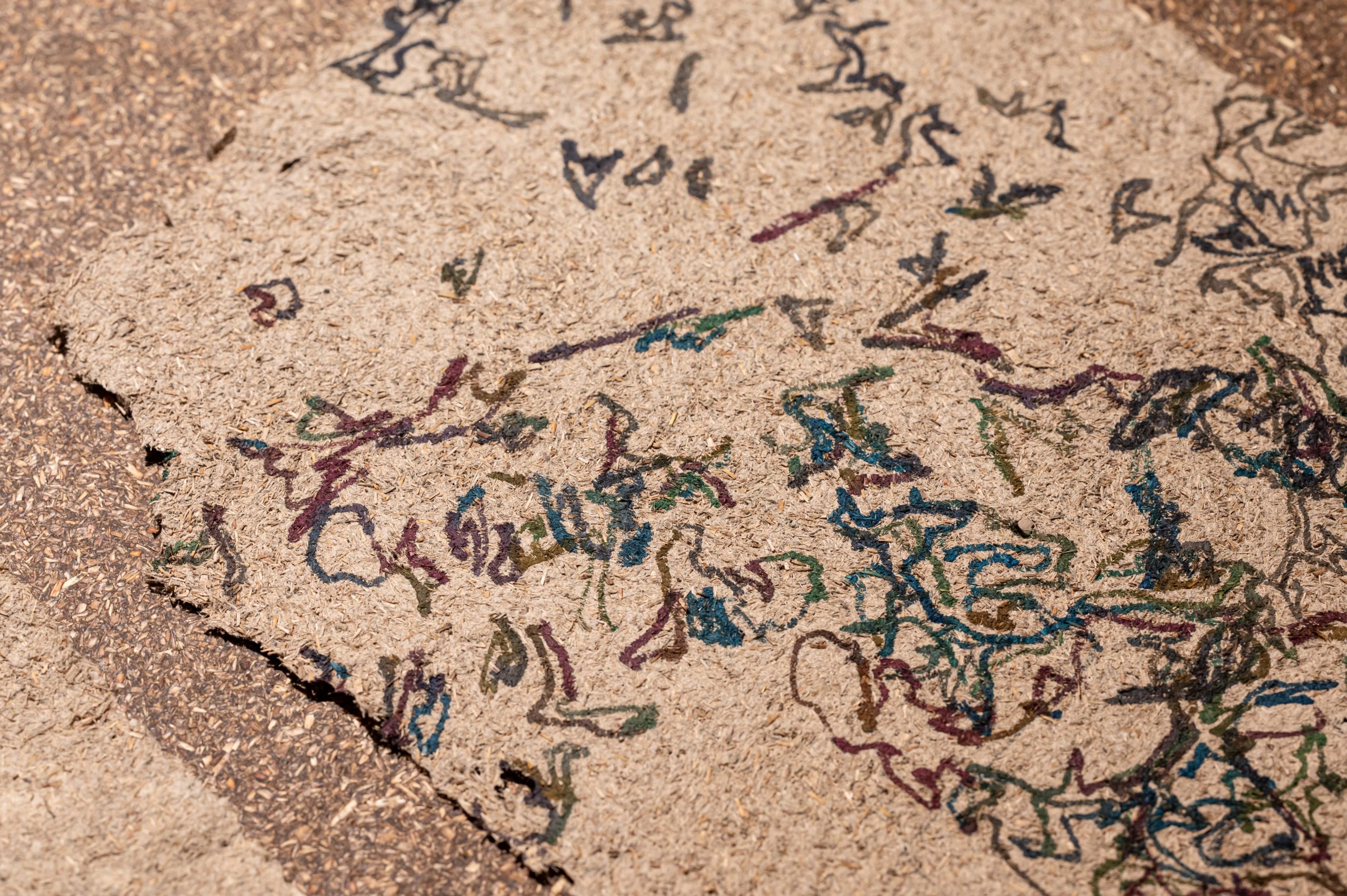

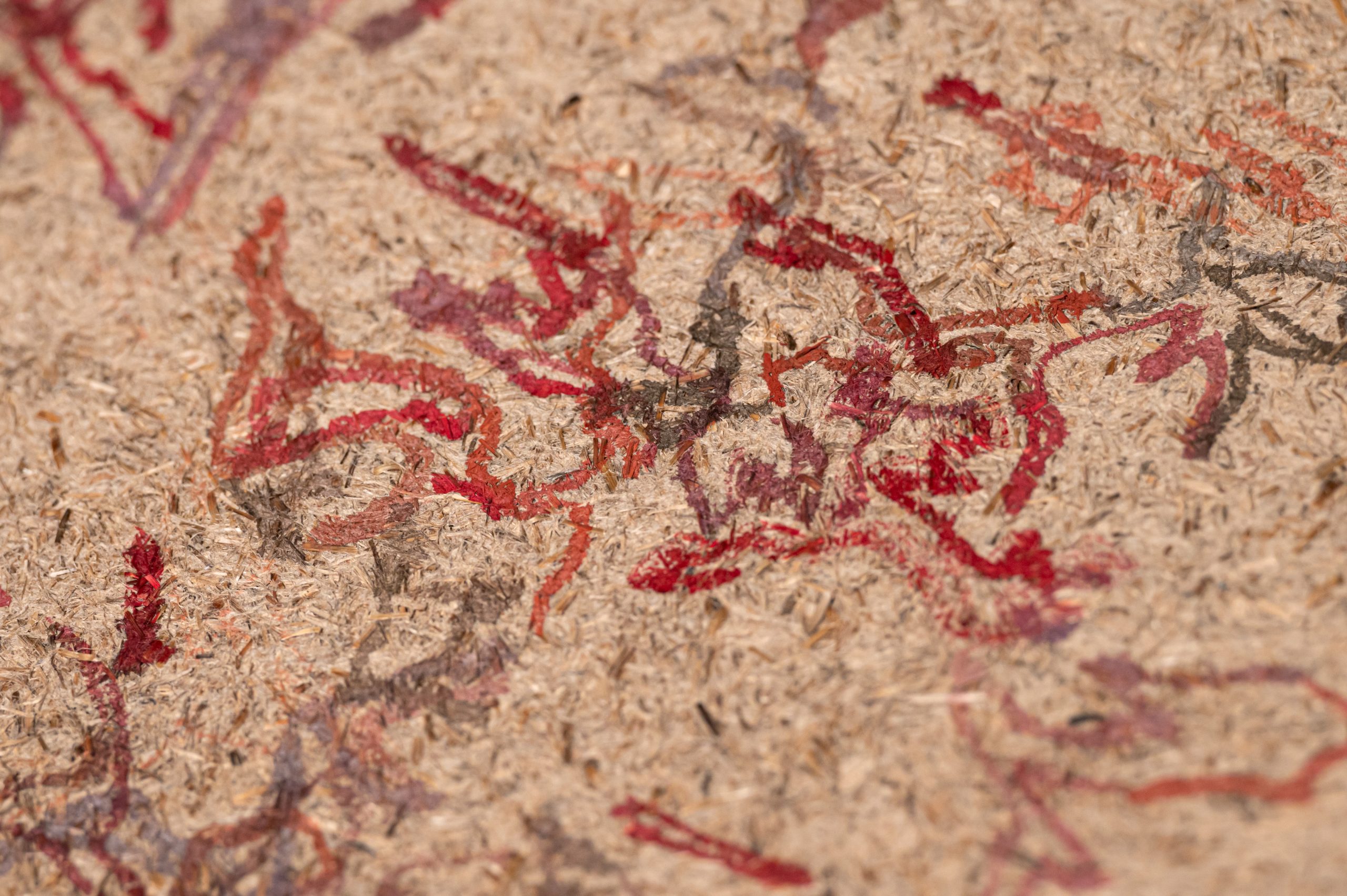

In wetlands, invasive reeds and black alders spread quickly, threatening the ecosystem with their overgrowth. To ensure the circulation of water and preserve the wetlands, scientists must reduce these plant populations every year. Putting harvested reeds to good use, Structure of Affect offers a workshop at which the audience is invited to make their own reed paper.


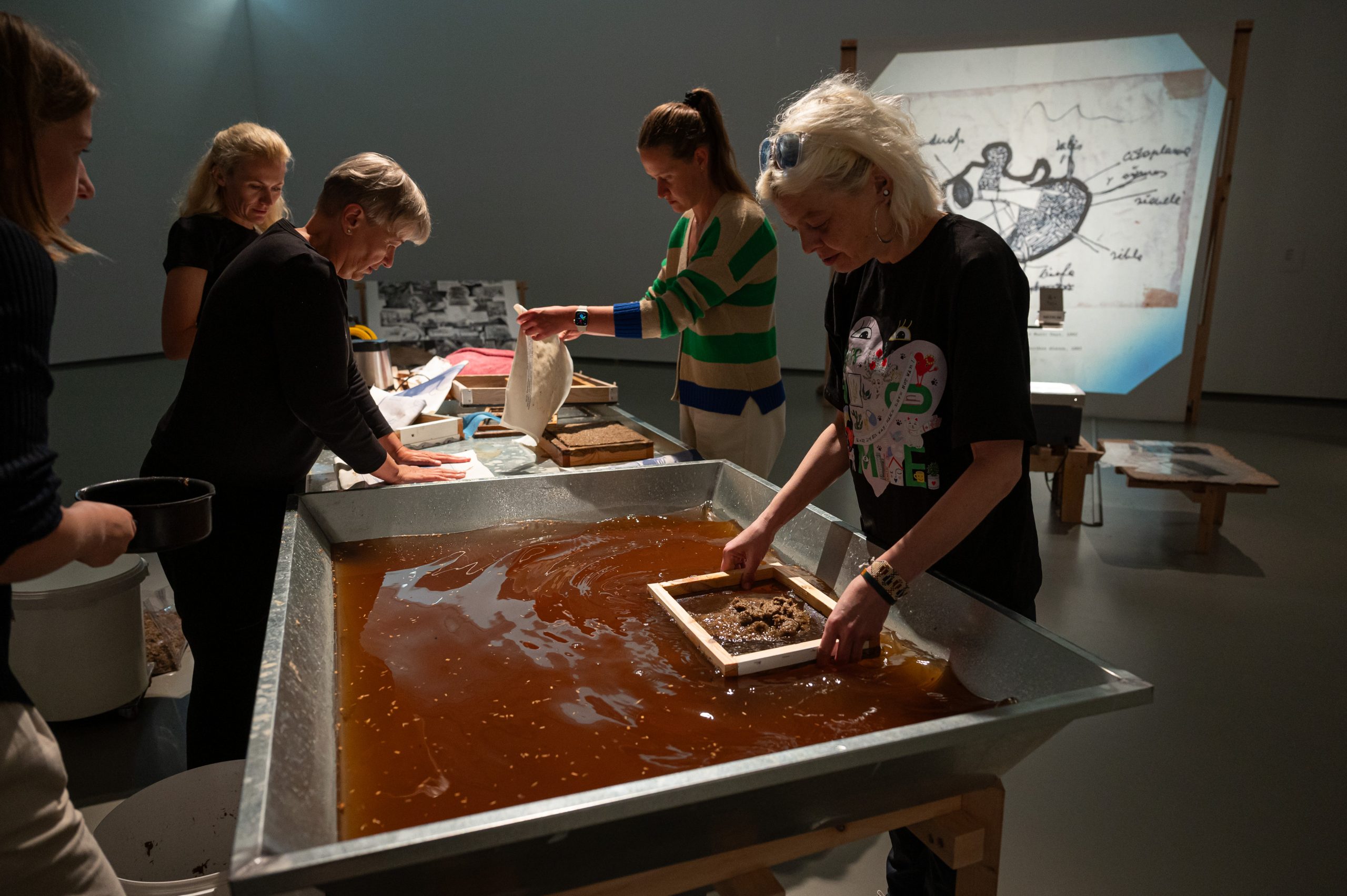



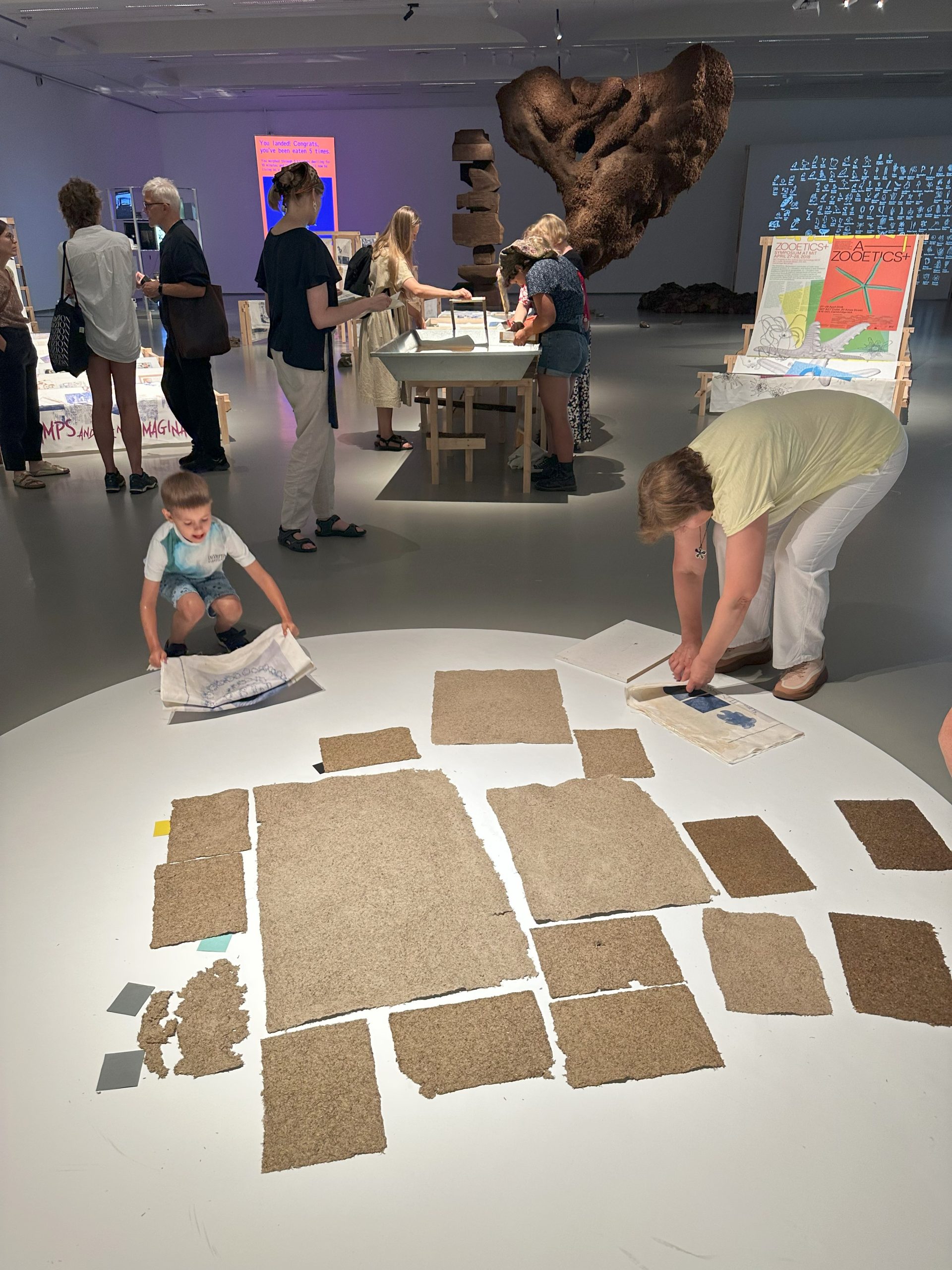
Another speculative product in the exhibition is a composite board made from reed compressed with a plant-based glue. The infrastructure of the workshop—tables and dryers for reed paper—is created from black alder.
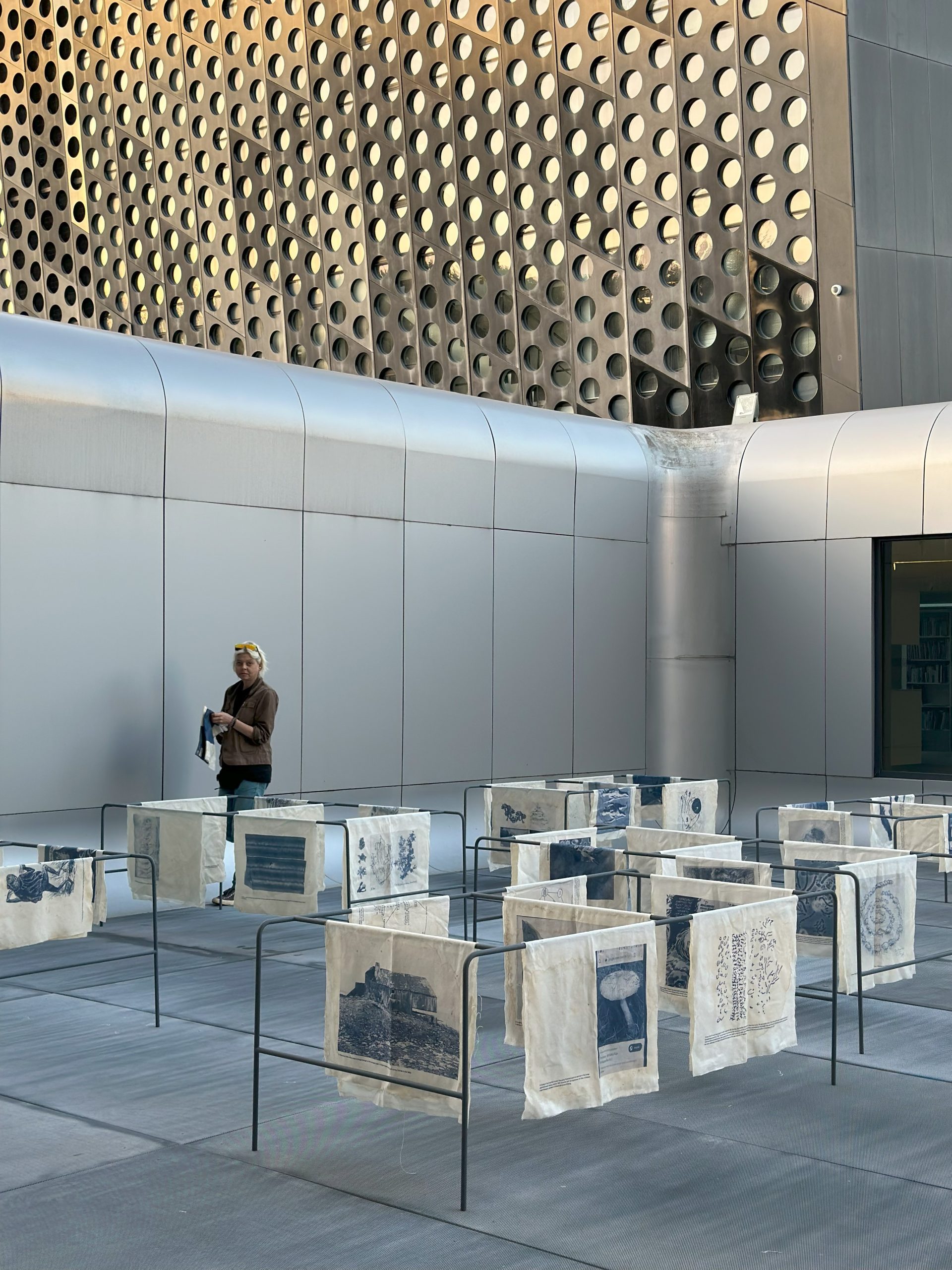
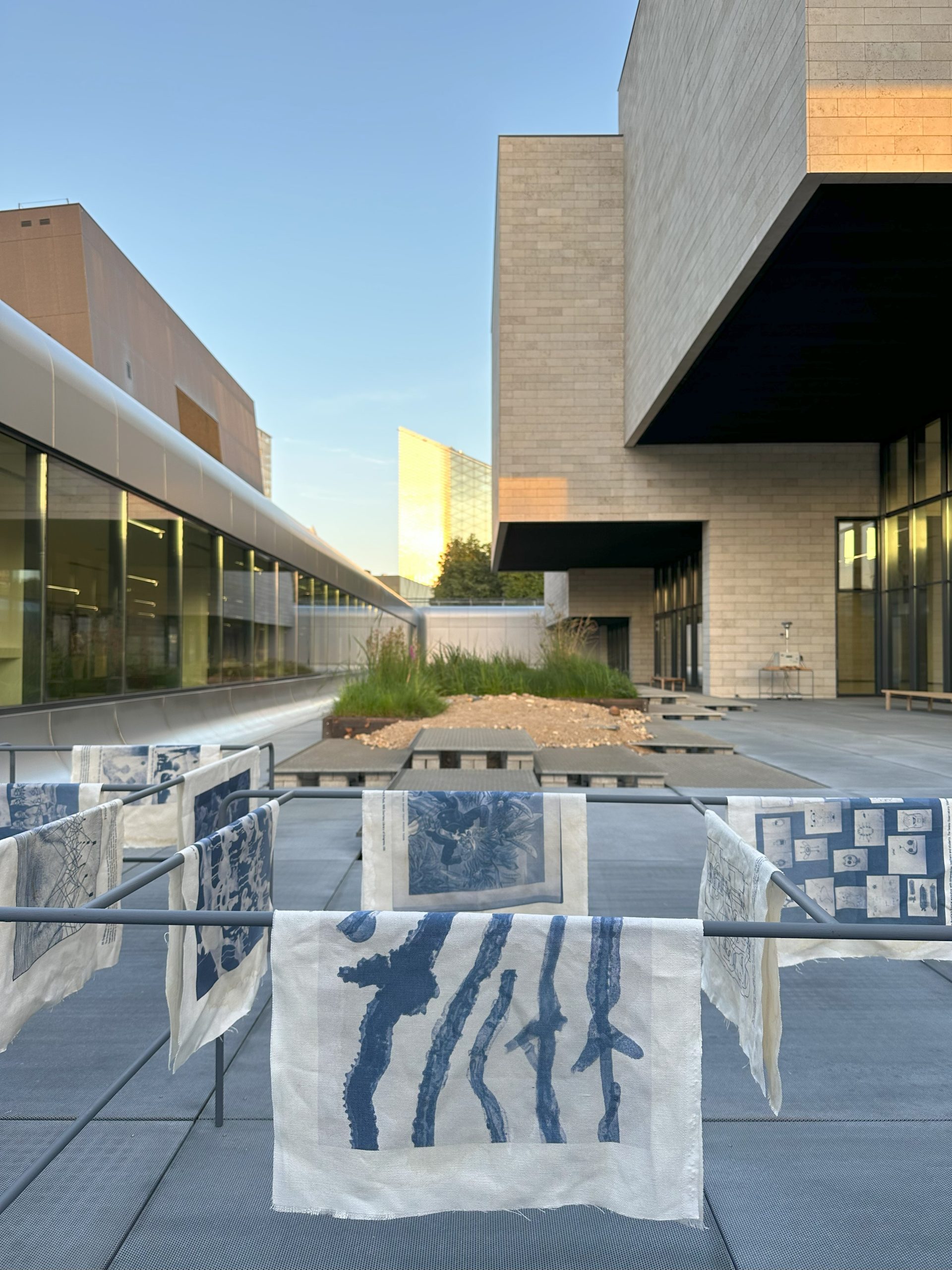


Linen towels for drying the reed paper become displays for reference libraries and archives of other artworks. During the course of the exhibition, the dry archives circulate among the structures and spaces of the museum, and reference images printed on the towels are soaked in the swampy water, thus creating operational images. In this way—as if in a swamp—Structure of Affect extends the ecology of wetlands restoration throughout the institution’s architecture, in works and displays whose elements and materialities mix and mingle in a performance of the exhibition’s affective and eco-empathetic method.

Concept: Nomeda & Gediminas Urbonas
Architecture: Jonas Žukauskas, Jurga Daubaraitė
Bog plant community: Remigijus Daubaras, Laima Kristina Kazlauskienė, Vytautas Kazlauskas
Reed papermaking workshop: Natalia Grom
Programming: Jonas Kubilius
Fabrication: Antanas Gerlikas, Giedrius Pilkis
Scientific advisors: Tobias Putrih, Nerijus Zableckis
Producer: MIT Climate Visions
Special thanks: Gintaras Rapkauskas, Barbara Lavrenova, Raimonda Grumadaitė, Juozas Molis, Juozas Dautartas, Jūratė Sendžikaitė
The Structure of Affect: Sensing Plants, Doodling Robots was conceived for the Partially Swamped Institution curated by Lars Bang Larsen for the National Gallery of Art in Vilnius, Lithuania. Supported by Vytautas Magnus University, UAB Durpeta, UAB Baloša, UAB Paina ir Ko, Environmental Protection Agency
Video: Sensing Plants (1)
Video: Sensing Plants (2)
Video: Doodling Robots
